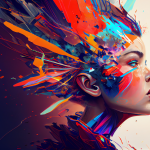Introduction.
Artificial Intelligence (AI) is changing how people create content, design, and even interact with technology.
AI generators, tools that produce everything from text to images and music, have become more accessible and powerful.
But a common challenge is the restrictions placed on these tools—whether it’s limited features, content moderation, or other controls.
For many, these restrictions can feel like a barrier to creativity or exploration. Are there AI generators that truly let you create freely?
This article dives into the idea of unrestricted AI generators, discussing their pros and cons, exploring how they work, and helping you understand what to look for in a tool that fits your needs.
What are AI Generators?
AI generators are tools powered by machine learning models designed to produce specific types of content.
Some create written text, while others specialize in images, videos, music, or even code. OpenAI’s ChatGPT, DALL-E, and others are popular examples.
But here’s the catch: many AI generators come with restrictions. These could include ethical guidelines, legal compliance, or simply limits in their design. For example, some tools might block certain topics or refuse to create explicit content.
While these restrictions have valid reasons—like avoiding harm or misuse—they also create limits for users.
Why Restrictions Exist
Understanding why these restrictions exist helps to evaluate the idea of unrestricted AI generators. The main reasons are:
- Ethical Concerns
AI can be used to spread harmful or inappropriate content. Restrictions aim to prevent misuse. - Legal Requirements
Different countries have laws about copyright, privacy, or hate speech. AI tools must comply with these rules. - Model Limitations
AI doesn’t “understand” content the way humans do—it follows patterns in data. Restrictions help guide it away from errors or dangerous outputs.
While these reasons make sense, they can frustrate users who want more freedom to experiment or push boundaries.
Unrestricted AI Generators: Are They Real?
Some AI tools advertise themselves as “unrestricted” or open, meaning they allow users to create content without heavy moderation or limits. These tools are often hosted on open-source platforms or designed with fewer filters.
Examples of Less-Restricted AI Generators:
- GPT-Neo: An open-source alternative to ChatGPT, which can be fine-tuned and customized.
- Stable Diffusion: A popular AI image generator with fewer restrictions compared to competitors like DALL-E.
- Custom Models: Tools like Hugging Face let you create AI models tailored to specific needs.
While these platforms offer more flexibility, they also come with risks. With no restrictions, there’s a chance of harmful or inappropriate content being produced. This is why some developers prefer balance—a tool that’s open but still has safeguards.
Pros and Cons of Unrestricted AI Generators
Pros:
- Freedom to Explore
No filters mean you can push creative boundaries, explore sensitive topics, or experiment with unconventional ideas. - Customization
Many unrestricted tools are open-source, allowing users to tweak the model for specific use cases. - Learning Opportunities
Developers and researchers can study the raw behaviour of AI without interference.
Cons:
- Ethical Risks
Unfiltered content can lead to misuse, harm, or violations of privacy and copyright. - Quality Issues
Without guidelines, the output might be less accurate or relevant. - Potential Legal Problems
Content created without restrictions might breach laws, leading to consequences for users.
How to Choose the Right AI Generator
If you’re curious about using an AI generator without restrictions, it’s essential to evaluate your goals. Ask yourself these questions:
- What will I use it for?
Is it for personal projects, business, or research? Tools vary in their capabilities and scope. - Do I have technical expertise?
Open-source platforms often require programming skills to customize models. - What risks am I willing to take?
Understand the ethical and legal implications before diving into unrestricted AI.
Alternatives to Fully Unrestricted Generators
If unrestricted AI feels risky, there are middle-ground solutions. For example, some tools let you turn on or off certain filters. This flexibility allows you to explore more freely while still having guardrails for safety.
- OpenAI’s API: While OpenAI enforces rules, developers can adjust the settings within ethical boundaries.
- MidJourney: Offers creative freedom with some light moderation.
FAQs
Q: What is the most unrestricted AI generator available?
A: Open-source platforms like GPT-Neo or Stable Diffusion are often less restricted compared to commercial tools. However, they may require technical skills to use effectively.
Q: Are unrestricted AI generators safe?
A: It depends. They offer freedom but also come with risks, like creating harmful or illegal content. Always use these tools responsibly.
Q: Can I remove restrictions on commercial AI tools?
A: Most commercial AI tools don’t allow users to bypass restrictions. If flexibility is a priority, look into open-source options instead.
Conclusion.
AI generators without restrictions sound appealing, especially if you’re looking for full creative control.
But they also come with responsibilities and risks. Whether you’re using them for fun, work, or innovation, understanding their limitations and potential is crucial.
So, here’s the question: Do you think unrestricted AI tools are the future, or do they need boundaries to ensure safety and ethics? Let’s start the conversation.





GIPHY App Key not set. Please check settings